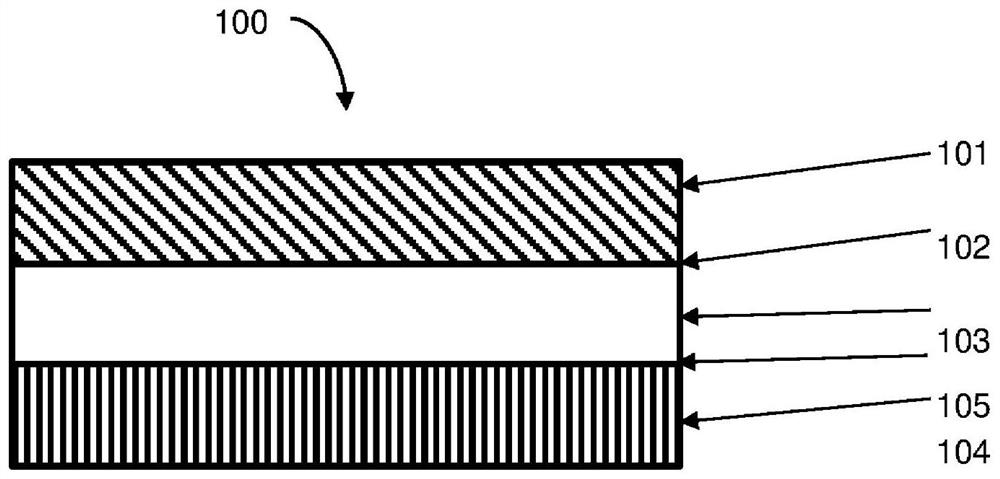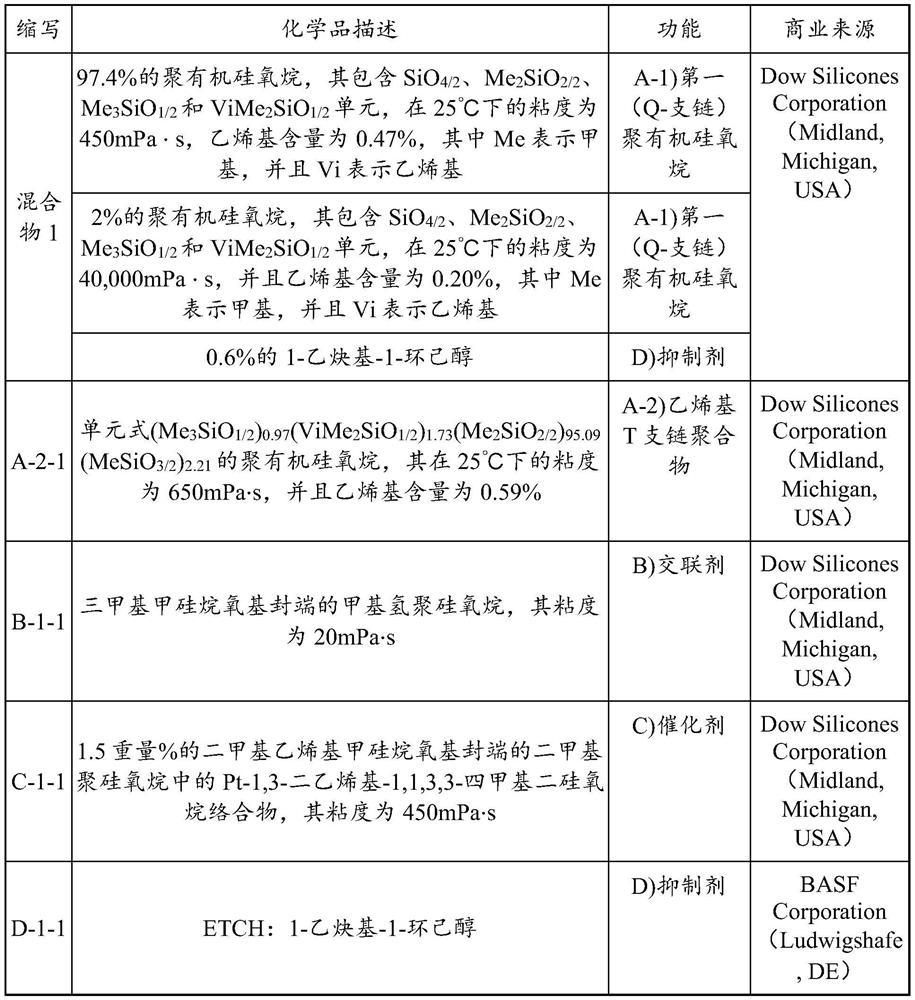Polyorganosiloxane Anti-sticking coating and preparation and use thereof
A technology of polyorganosiloxane and diorganosiloxane, which is applied in the field of polyorganosiloxane anti-stick coating and its preparation and application, and can solve problems such as coating migration and low peeling force
- Summary
- Abstract
- Description
- Claims
- Application Information
AI Technical Summary
Problems solved by technology
Method used
Image
Examples
Embodiment
[0083] These examples are intended to illustrate some embodiments of the invention to those skilled in the art and are not to be construed as limiting the scope of the invention described in the claims. The following abbreviations are used: RF: peel force (peel tester), CW: coating weight (Oxford XRF), RO: rub off (fix performance), and SAS: subsequent adhesion strength (migration performance).
[0084] RT: room temperature of 25°C. Table 1 below shows the starting materials used in these examples. Viscosities are measured at 25°C unless otherwise indicated.
[0085] Table 1 - Starting materials used in the examples
[0086]
[0087]
[0088] In the above table, M represents the formula (Me 3 SiO 1 / 2 ) unit, D Ph Expression (MePhSiO 2 / 2 ) unit, D Vi Expression (MeViSiO 2 / 2 ) unit, D Ph2 Expression (Ph 2 SiO 2 / 2 ), Me represents methyl, Ph represents phenyl, and Vi represents vinyl.
reference example 1
[0089] Reference Example 1 - Anti-stick coating preparation
[0090] Using the starting materials and amounts indicated in the table, samples of the release coating composition were prepared by the following steps I. and II.
[0091] I. Combine the following starting materials in a container:
[0092] i) Mixture 1 or a mixture of A-2-1 and D-1-1,
[0093] ii) one of the peel force modifiers E) in Table 1,
[0094] iii) fixing additive F-1-1, and
[0095] iv) Crosslinker B-1-1 and mix until uniform. An appropriate amount of toluene solvent was added to homogenize the starting material, if necessary.
[0096] II. Catalyst C-1-1 was added and the resulting mixture was mixed for 10 minutes to form a release coating composition.
[0097] The release coating composition was then coated on the PET substrate using a coater. The release coating composition is cured via thermal addition cure in an oven. (Usually at 140°C for 30 seconds). Three samples of each release coating c...
reference example 2
[0098] Reference Example 2 – Release Coating Evaluation
[0099] (1) Using an Oxford lab-x 3500 instrument manufactured by Oxford Instruments PLC (Oxon, United Kingdom), X-rays were used to evaluate 2 Coat weight (CW) is measured in units of coat weight (CW) of the cured release coating on the substrate. Uncoated PET was used as a control sample (blank). The test method is the seventh test method of FINAT (FINAT Technical Manual, 7th edition, 2005).
[0100] (2) Use the 180 degree peel test to evaluate the peel force in g / in (RF-RT) to measure the peel force from the release liner. Laminate Tesa 7475 standard tape on the cured release coating at 20g / cm 2 A loading weight of 1000 was placed on the laminated sample and left at RT (room temperature of 25°C) for 20 hours. After 20 hours, the loading weights were removed and the samples were allowed to sit for 30 minutes. Peel force was then tested by ChemInstruments AR-1500 using FINAT Clause 10 test method (FINAT Technical...
PUM
| Property | Measurement | Unit |
|---|---|---|
| viscosity | aaaaa | aaaaa |
| viscosity | aaaaa | aaaaa |
Abstract
Description
Claims
Application Information
 Login to View More
Login to View More - R&D Engineer
- R&D Manager
- IP Professional
- Industry Leading Data Capabilities
- Powerful AI technology
- Patent DNA Extraction
Browse by: Latest US Patents, China's latest patents, Technical Efficacy Thesaurus, Application Domain, Technology Topic, Popular Technical Reports.
© 2024 PatSnap. All rights reserved.Legal|Privacy policy|Modern Slavery Act Transparency Statement|Sitemap|About US| Contact US: help@patsnap.com










